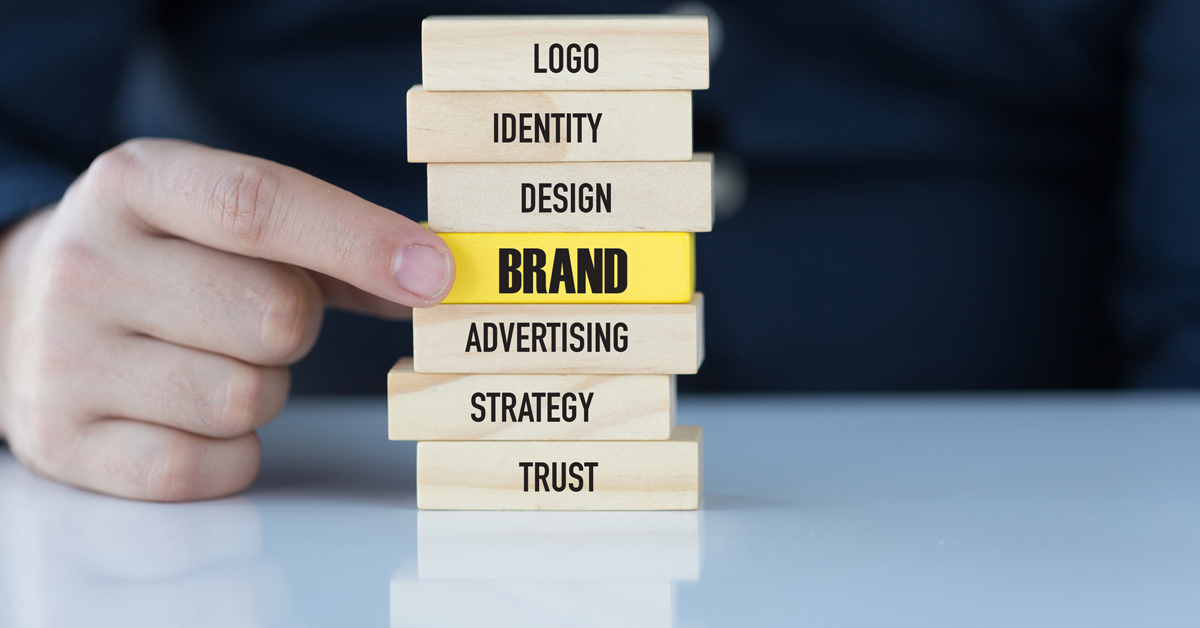Brand reputation is how the public perceives a brand, including their emotions, thoughts, and ideas associated with the brand’s name.
It reflects how people feel about a company, its products, services, customer service, and overall behavior. The people can be anyone—customers, stakeholders, and the general public.
It isn’t limited to what a company says about itself, but also what people experience and hear from others.
It is indeed important, but why? How do brands build their reputation? How to measure yours?
Read this guide and learn about all such queries!
Brand Reputation vs. Brand Image: What Is the Difference?
First things first, let’s clarify that brand reputation and brand image are two different things.
Simply put, brand image is how a company wants to be perceived, while brand reputation is how the public actually perceives the company.
For brand image, brands use ads, logos, looks, and other marketing tactics to present themselves and make people think of them in a certain way.
Brand reputation is about what people believe based on real actions. It comes from product quality, customer service, and how the brand behaves over time.
Essentially, brand image is the intentional projection of a company’s identity, whereas brand reputation is the outcome of how that projection is received and interpreted by others.
Images can be built quickly through marketing. But reputation takes time and trust.
A brand might look good (image), but if it doesn’t act right (reputation), people may not trust it.
Both are important for a brand’s success.
The Impact of Brand Reputation on Business
Coming back to today’s topic, why does brand reputation even matter?
According to Nielsen, in its global Trust in Advertising Study in 2021, more than 88% of consumers prioritize buying from recommendations from people they know.
This is called Word of Mouth marketing, and it is a perfect example to show the importance of having a good brand reputation among your customers.
So, a good brand reputation is very, very important for many reasons.
It is like the most valuable asset for any brand or business. It helps:
- Bring more customers and retain the existing ones
- Make existing customers recommend your brand and its products/services to new people (word-of-mouth marketing)
- Grow your business way better than your competitors
- Built brand loyalty
- Ease up launching new products as you would have already have people who trust your brand and buy from you
And the list goes on.
A good brand reputation helps a business grow in every way possible. It helps bring more customers, sales, profit, and every other good thing.
What Exactly Shapes Brand Reputation?
Brand reputation is shaped by many things people see, feel, and experience with a company:
- Product or service being offered
- Customer service
- Word-of-mouth
- Online presence of the brand
- Public picture
- Marketing efforts
- And so on
It starts with product or service quality. If your product works well and solves real problems, people trust you more.
Customer service matters a lot, too. How a company treats customers—before and after the sale—leaves a lasting impression.
Then comes word-of-mouth—it does matter. If people say good things about your brand to others, it means a big win for your brand.
Anything that existing or new customers of the brand are saying online is also important. It can be reviews, social media comments, personal recommendations, etc.
How your company behaves publicly also matters. Everyone notices how you treat employees, handle complaints, and respond in case of emergencies.
Even your marketing efforts play a role—but only when they match real actions. People only trust if what you promise and what you deliver match.
All these things together form a reputation—whether it’s good or bad.
It’s about what people believe based on experience, not just what a brand says.
How to Build and Maintain Brand Reputation?
Now comes the most important part: building and maintaining your brand reputation.
Here are the tips, tricks, and strategies you can implement for this purpose:
1. Build Brand Identity

The first step is to know who you are as a brand.
What are your mission, values, and voice? What do you stand for? What are the things that make your brand different or special from others?
Maintain a consistent personality in your brand. Use the logo, your colors, your messaging, and tone of voice to reflect who you really are.
And keep everything the same everywhere—on the website, social media, packaging, ads, etc.
That consistency helps build familiarity and trust.
Suppose you run a brand focused on fun and creativity. In such a case, you must design a logo, product packaging, blog, visuals, email template, and everything else that reflects it.
It all adds up and tells a story about your brand.
2. Use Products/Services As a Foundation

You have a great logo, catchy tagline, and well-matched colors; everything is perfect.
If so, ensure your product or service delivers it. Your reputation starts here.
People buy your product to solve a problem or fulfill a need. If it does that reliably, they’ll trust you. If it fails, they’ll remember—and probably tell others too.
That is why product quality should always come first.
Keep working on and improving your service/product. For this:
- Use customer feedback
- Follow trends in your industry
- Adjust based on what people actually need, not what you think they need.
Even small changes and/or improvements you make can make a big difference.
A happy customer is your best marketing tool. And a solid product makes that happen.
3. Provide Excellent Customer Service

This one’s a biggie.
According to data from Microsoft, 58% of customers cut off and stop buying from a brand if their expectations lag behind what they were expecting.
You can have the best product in the world, but if your service is poor, people won’t come back.
Worse, they’ll tell others not to bother.
Great service isn’t just about solving problems. It’s about how you make people feel in the process. Be polite. Be patient. Listen. And always go the extra mile.
If someone’s order went wrong, fix it fast—apologize, offer a solution, and follow up. This is one way to turn a bad moment into a memorable one.
Also, be proactive. Check in with customers after a purchase.
If you can’t handle customer service yourself (because it is not your brand’s main focus), start working with a BPO service provider and hire their virtual assistant.
Ask how their experience was. People remember brands that care enough to follow up.
4. Be Honest and Clear in Marketing

You don’t need to overhype your brand. Just be real.
Promise your customers only what you can actually deliver. You must not fall short.
The reason is simple: no one likes to feel tricked.
You would have some strengths. Let them shine. Focus on the things you do well. Over time, your honesty will strengthen your relationship with your audience.
When marketing yourself, use real customer experiences and stories instead of exaggerations.
Think of it like this: trust takes a long time to build, but only seconds to lose.
5. Have a Strong Online Presence

Today, your first impression is often online—website and social media.
First of all, have a website. If not, create one now. And make sure it looks good, works in a smooth manner, and aligns with your brand identity.
It should be fast, updated with the latest brand-related information, and error-free.
The same goes for your social media.
Be active online. Respond to messages, comments, and reviews. If someone leaves positive feedback, thank them. If they criticize, handle it politely.
But DO NOT ignore people at any cost, as it shows your brand is careless. Whatever the situation is, show them that you listen.
You can even share updates, behind-the-scenes moments, and customer stories. It keeps your audience connected and shows the human side of your business.
6. Be Socially Responsible

A lot of people look at how brands act, not just what they sell.
Along with talking about your product, if it applies, mention:
- Your brand supports a good cause
- Use eco-friendly packaging
- Treats employees well
- Donate to charities
- Etc.
But only if it is real. Don’t fake it or do it just for show.
It is the 21st century (an era with a lot of information available online), and people are wise enough to spot inauthenticity a mile away.
Remember, it doesn’t mean solving every world problem. Just find causes that align with your brand and your customers’ values.
These actions create emotional loyalty, where people don’t just like your product, they respect your brand.
7. Ask For and Learn From Feedback

The last tip here is to know what people think about your brand.
But how do you do that? Simply ask them.
Request your existing customers to share their reviews. You can even run surveys and listen to what people say about your brand.
DO NOT ignore the criticism at any cost. Even if it stings, it is the best way to grow and improve.
Make it easy for people to leave feedback on your site or through email. Then take it seriously.
If you make a change based on someone’s suggestion, let them know! It shows you’re listening and that you care.
And when you get a bad review? Don’t ignore it. Respond calmly, offer a solution, and show others that you will make things right.
That kind of response actually builds trust, even from people who weren’t involved.
How Do You Measure Brand Reputation?
Measuring brand reputation isn’t as simple as getting one single number.
There’s no fixed formula, but there are helpful metrics you can track. These give you a good idea of how your brand is doing compared to others or to your past performance.
Some key metrics include
- Social media reach
- Share of voice
- Sentiment analysis
- Online reputation score
First, check your social media reach. See how many people see your brand online. If people with big followings talk about you, you have a good reach.
Share of voice is also important. See how many people talk about your brand than others in your industry. It helps you know how visible and popular your brand is.
Look closely at the sentiments—what people say about your brand is mostly positive or negative. Use your findings to spot what people like or don’t like.
Use these tactics together to keep an eye on your brand’s reputation.
Conclusion
Ultimately, brand reputation is all about trust, which is built through actions, not just words.
It’s shaped by how your products perform, how you treat customers, and how you present yourself both online and offline.
Building and maintaining it takes time, effort, and honesty.
But the rewards are worth it—loyal customers, strong word-of-mouth, and long-term growth.
Keep listening, keep improving, and stay true to your values.
That’s the real key to a strong brand reputation.




